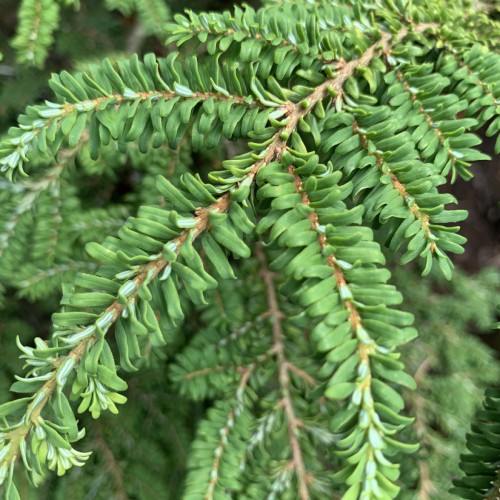
Canadian hemlock
Tsuga canadensis 'Coffin'
Also Known As - eastern hemlockCycle:
Perennial
Watering:
Average
Hardiness Zone:
3 - 7
Flowers:
Flowers In Spring
Sun:
Deep shade, Filtered shade, Full sun only if soil kept moist, Part sun/part shade
Soil:
Sandy Loamy Clay
Cones:
Yes
Leaf:
Yes
Growth Rate:
Moderate
Maintenance:
Low
Salt Tolerant:
Yes
Care Level:
Medium
watering
Canadian hemlock (Tsuga canadensis 'Coffin') should be watered regularly but not too much. As a general rule of thumb, water deeply once or twice a week. Depending on the weather, soil type, and temperature, water may need to be adjusted accordingly. In summer months, water the soil around the plant when the top inch is just beginning to dry out, making sure to avoid over-watering. In winter months, water the soil every 2 to 3 weeks when temperatures are above 40 degrees Fahrenheit. In order to ensure the right balance, check the soil for moisture 1-2 inches down before applying water. That should provide you with a good guide for how much and when to water your Canadian hemlock.
sunlight
Canadian hemlock (Tsuga canadensis 'Coffin') prefers partial to full sun, preferably with filtered sunlight in the afternoon. It should be planted in an area that provides 4-6 hours of partial sunlight in the morning and 4-6 hours of filtered sunlight in the afternoon. Avoid hot, direct sun during the hottest hours of the day. The more sun it gets, the denser and fuller the foliage will be.
pruning
Canadian hemlock (Tsuga canadensis 'Coffin') should be pruned in late winter or early spring. Pruning should be kept at a minimum, removing only dead, diseased, or aged branches as needed. Avoid removing more than 10-15% of the foliage in a single pruning session, as this could cause stress on the tree. When pruning, be sure to wear pruning gloves and use by-pass pruning shears. If you need to remove large branches, prune cautiously to prevent the introduction of diseases or suckering.
